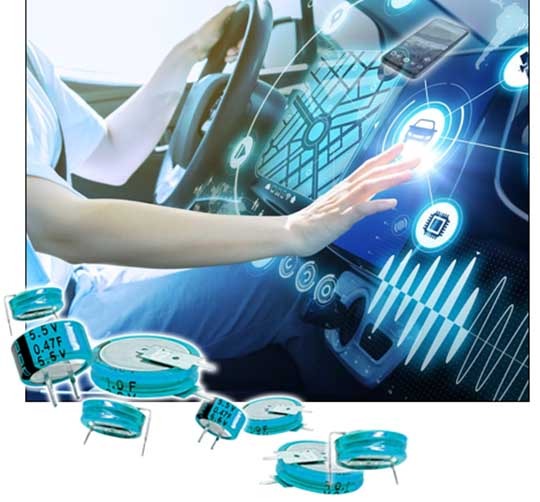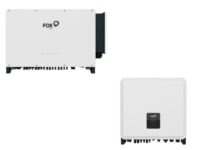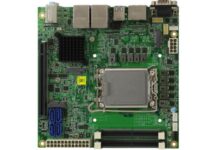NORTHVALE, New Jersey, USA – New Yorker Electronics has announced the release of the new EDC and EDS series of Coin Cell style EDLC capacitors from Cornell Dubilier. With quick-response and recharge times, these devices offer higher power than batteries and greater energy than typical aluminum electrolytic capacitors – without degradation over millions of charge-discharge cycles.
These new supercapacitors can replace or extend battery life in on-board memory backup. They are electric double-layer supercapacitors that provide high capacitance values in a thru-hole stacked coin type package. Three case configurations are available for horizontal, vertical and radial-lead PCB mounting.
EDC and EDS series capacitors are ready to board mount in such applications as real-time clock (RTC) backup, power failure backup, battery assist and in market segments such as smart metering, HVAC controls, building automation, communication systems, appliances, instruments and other microprocessor-based devices. Because of their high volumetric power density, they can be an effective way to reduce board size and weight. Either series can be used as a drop-in replacement for similar value capacitors recently discontinued by other manufacturers.
The CDE EDC Series is rated at voltages up to 6.3WVDC with an operating temperature of -25°C to +70°C. The EDS series is rated at 5.5WVDC with an operating temperature of -25°C to +85°C. Both offer values from 0.047F to 1.5F capacity. Primarily designed for integrated circuit voltage backup, the capacitors can also be used to deliver the initial power from batteries.
Features & Benefits:
- Long life
- High discharge current
- 70°C (EDC) or -85°C (EDS) Operating temperature
Applications:
- On-board memory backup circuits
- Audio output circuits
- Energy/Lighting
- Smart utility meters (AMR)
- Solar lights and energy storage
- Power conversion
- IoT–Energy harvesting/storage
- Industrial controls
- Telematics
For more information, please visit at: newyorkerelectronics.com















